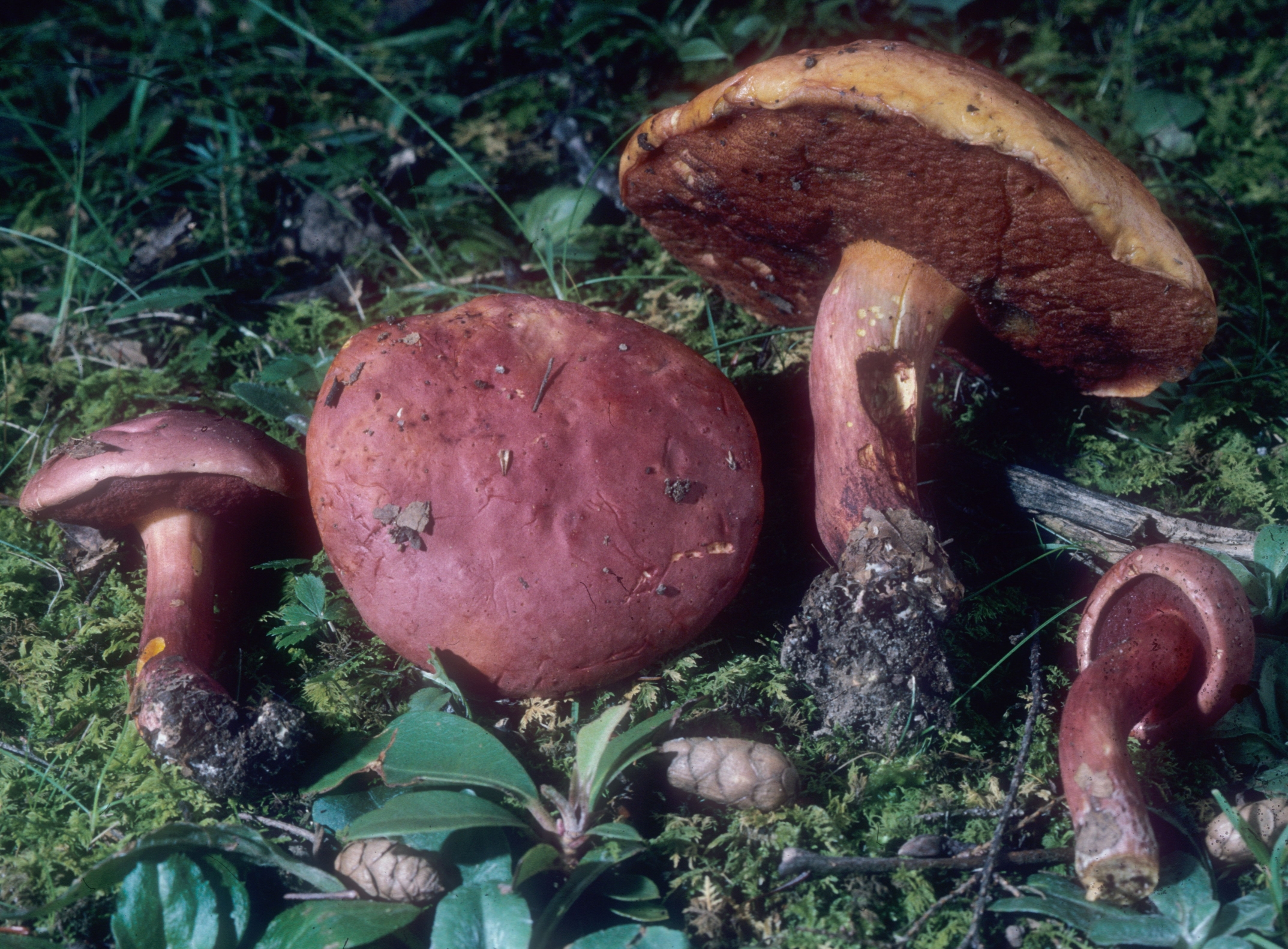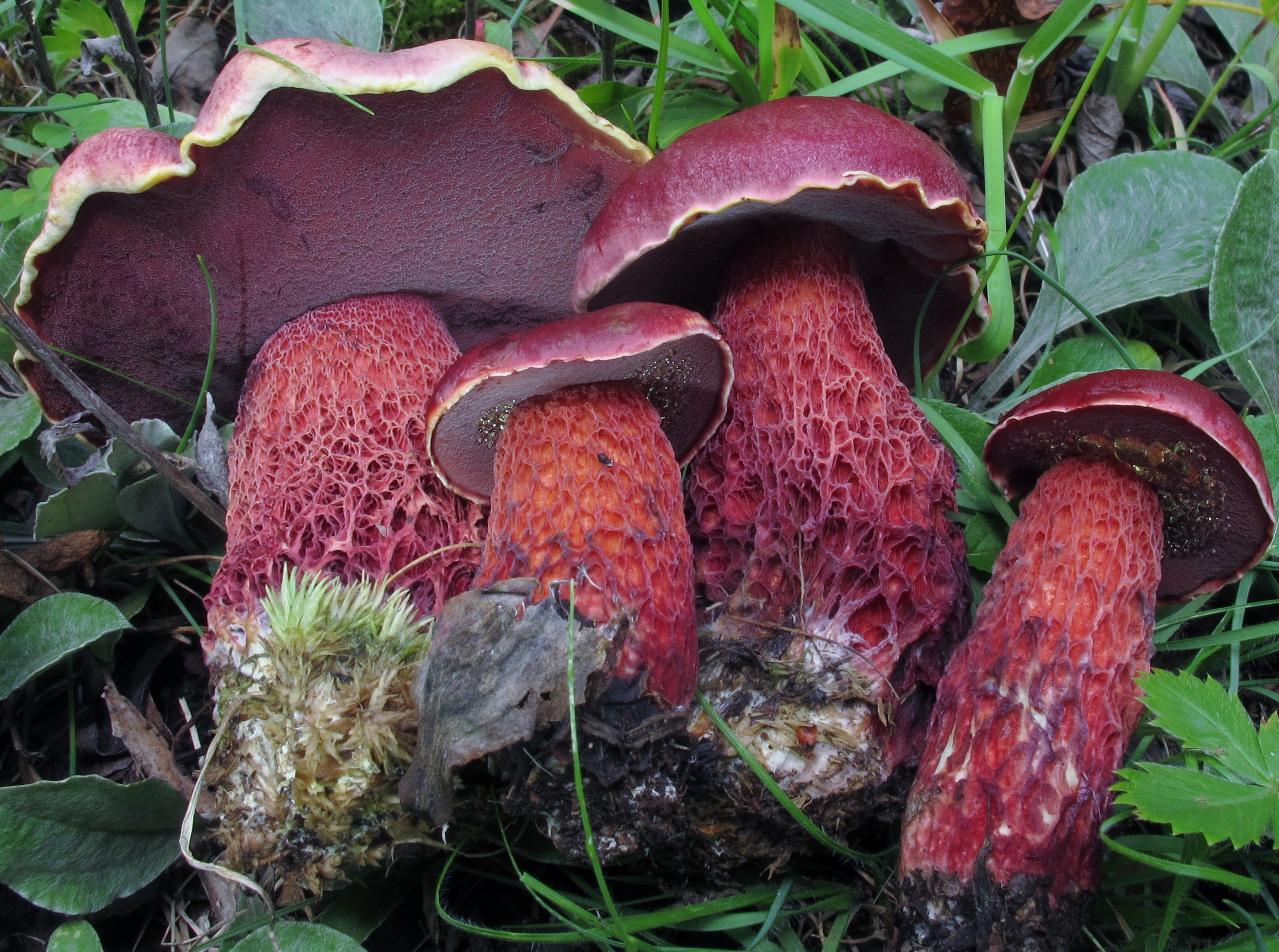|
Exsudoporus
''Exsudoporus'' is a genus of fungi in the family Boletaceae. It was circumscribed in 2014 by Alfredo Vizzini and colleagues, following a number of molecular studies that outlined a new phylogenetic framework for Boletaceae and revealed the genus ''Boletus'' in its traditional circumscription to be polyphyletic. However, due to lack of sufficient sequences, Wu and colleagues (2016) were reluctant to accept the newly proposed genus and considered it a synonym of ''Butyriboletus''.Wu G, Li YC, Zhu XT, Zhao K, Han LH, Cui YY, Li F, Xu J, Yang ZL. (2016). One hundred noteworthy boletes from China. Fungal Diversity 81(1): 25–188. Following additional phylogenetic sequencing and morphological analyses, ''Exsudoporus'' was clearly resolved as a monophyletic, homogenous and independent genus that is sister to ''Butyriboletus''. Species of ''Exsudoporus'' are united by the tendency of their pores to exude yellowish droplets, hence the generic epithet. Other distinctive features separ ... [...More Info...] [...Related Items...] OR: [Wikipedia] [Google] [Baidu] |
Exsudoporus Frostii
''Exsudoporus frostii'' (formerly ''Boletus frostii''), commonly known as Frost's bolete or the apple bolete, is a bolete fungus first described scientifically in 1874. A member of the family Boletaceae, the mushrooms produced by the fungus have tubes and pores instead of gills on the underside of their caps. ''Exsudoporus frostii'' is distributed in the eastern United States from Maine to Georgia, and in the southwest from Arizona extending south to Mexico and Costa Rica. A mycorrhizal species, its fruit bodies are typically found growing near hardwood trees, especially oak. ''Exsudoporus frostii'' mushrooms can be recognized by their dark red sticky caps, the red pores, the network-like pattern of the stipe, and the bluing reaction to tissue injury. Another characteristic of young, moist fruit bodies is the amber-colored drops exuded on the pore surface. Although the mushrooms are considered edible, they are generally not recommended for consumption because of the risk of ... [...More Info...] [...Related Items...] OR: [Wikipedia] [Google] [Baidu] |
Exsudoporus Frostii Russell 347349
''Exsudoporus'' is a genus of fungi in the family Boletaceae. It was circumscribed in 2014 by Alfredo Vizzini and colleagues, following a number of molecular studies that outlined a new phylogenetic framework for Boletaceae and revealed the genus ''Boletus'' in its traditional circumscription to be polyphyletic. However, due to lack of sufficient sequences, Wu and colleagues (2016) were reluctant to accept the newly proposed genus and considered it a synonym of ''Butyriboletus''.Wu G, Li YC, Zhu XT, Zhao K, Han LH, Cui YY, Li F, Xu J, Yang ZL. (2016). One hundred noteworthy boletes from China. Fungal Diversity 81(1): 25–188. Following additional phylogenetic sequencing and morphological analyses, ''Exsudoporus'' was clearly resolved as a monophyletic, homogenous and independent genus that is sister to ''Butyriboletus''. Species of ''Exsudoporus'' are united by the tendency of their pores to exude yellowish droplets, hence the generic epithet. Other distinctive features separ ... [...More Info...] [...Related Items...] OR: [Wikipedia] [Google] [Baidu] |
Exsudoporus Floridanus
''Exsudoporus floridanus'' is a species of edible bolete mushroom in the family Boletaceae. In 1945, American mycologist Rolf Singer described a species he found in Florida during his 1942–3 tenure of a Guggenheim Memorial Fellowship. He originally described it as a subspecies of the eastern North American species ''Boletus frostii'', but later considered it worthy of distinct species status in a 1947 publication. Based on morphological and phylogenetic data, Vizzini and colleagues transferred this species to a newly described genus '' Exsudoporus'' in 2014. Due to lack of sufficient sequences, Wu et al. (2016) were reluctant to accept ''Exsudoporus'' and considered it a synonym of ''Butyriboletus'', so they proposed a new combination ''Butyriboletus floridanus''. However, following phylogenetic and morphological analyses clearly resolved ''Exsudoporus'' as a monophyletic, homogenous and independent genus that is sister to ''Butyriboletus''. ''Exsudoporus floridanus'' diff ... [...More Info...] [...Related Items...] OR: [Wikipedia] [Google] [Baidu] |
Exsudoporus Permagnificus
''Exsudoporus permagnificus'' is a species of bolete fungus in the family Boletaceae, native to Southern Europe and Western Asia (Cyprus and Israel). Described as new to science in 1981, the fungus was originally placed in genus ''Boletus.'' Following molecular studies outlining a new phylogenetic framework for Boletaceae, the fungus was transferred to the newly erected genus '' Exsudoporus'' in 2014, to which it is the type species. Nevertheless, Wu and colleagues (2016) were reluctant to accept the newly proposed genus due to a lack of sufficient sequences and regarded it a synonym of ''Butyriboletus''. Following studies reinstated the status of '' Exsudoporus'' as a monophyletic genus sister to ''Butyriboletus'', following additional collections and extended phylogenetic and morphological analyses. ''Exsudoporus permagnificus'' is rare throughout its distribution area and listed as a vulnerable or endangered species in a number of regional and national checklists.Karadelev M, R ... [...More Info...] [...Related Items...] OR: [Wikipedia] [Google] [Baidu] |
Boletaceae
The Boletaceae are a family of mushroom-forming fungi, primarily characterised by small pores on the spore-bearing hymenial surface (at the underside of the mushroom), instead of gills as are found in most agarics. Nearly as widely distributed as the agarics, the family is renowned for hosting some prime edible species highly sought after by mushroom hunters worldwide, such as the cep or king bolete (''Boletus edulis''). A number of rare or threatened species are also present in the family, that have become the focus of increasing conservation concerns. As a whole, the typical members of the family are commonly known as boletes. Boletes are a group of mushrooms reasonably safe for human consumption, as none of them are known to be deadly to adults. Edible bolete species are especially suitable for novice collectors, since they pose little danger of being confused with deadly poisonous mushrooms, such as deadly ''Amanita'' species which bear gills instead of pores in their ... [...More Info...] [...Related Items...] OR: [Wikipedia] [Google] [Baidu] |
Fungi
A fungus (plural, : fungi or funguses) is any member of the group of Eukaryote, eukaryotic organisms that includes microorganisms such as yeasts and Mold (fungus), molds, as well as the more familiar mushrooms. These organisms are classified as a Kingdom (biology), kingdom, separately from the other eukaryotic kingdoms, which by one traditional classification include Plantae, Animalia, Protozoa, and Chromista. A characteristic that places fungi in a different kingdom from plants, bacteria, and some protists is chitin in their cell walls. Fungi, like animals, are heterotrophs; they acquire their food by absorbing dissolved molecules, typically by secreting digestive enzymes into their environment. Fungi do not photosynthesize. Growth is their means of motility, mobility, except for spores (a few of which are flagellated), which may travel through the air or water. Fungi are the principal decomposers in ecological systems. These and other differences place fungi in a single gro ... [...More Info...] [...Related Items...] OR: [Wikipedia] [Google] [Baidu] |
North America
North America is a continent in the Northern Hemisphere and almost entirely within the Western Hemisphere. It is bordered to the north by the Arctic Ocean, to the east by the Atlantic Ocean, to the southeast by South America and the Caribbean Sea, and to the west and south by the Pacific Ocean. Because it is on the North American Plate, North American Tectonic Plate, Greenland is included as a part of North America geographically. North America covers an area of about , about 16.5% of Earth's land area and about 4.8% of its total surface. North America is the third-largest continent by area, following Asia and Africa, and the list of continents and continental subregions by population, fourth by population after Asia, Africa, and Europe. In 2013, its population was estimated at nearly 579 million people in List of sovereign states and dependent territories in North America, 23 independent states, or about 7.5% of the world's population. In Americas (terminology)#Human ge ... [...More Info...] [...Related Items...] OR: [Wikipedia] [Google] [Baidu] |
Boletus Floridanus 236116
''Boletus'' is a genus of mushroom-producing fungi, comprising over 100 species. The genus ''Boletus'' was originally broadly defined and described by Carl Linnaeus in 1753, essentially containing all fungi with hymenial pores instead of gills. Since then, other genera have been defined gradually, such as '' Tylopilus'' by Petter Adolf Karsten in 1881, and old names such as '' Leccinum'' have been resurrected or redefined. Some mushrooms listed in older books as members of the genus have now been placed in separate genera. These include such as ''Boletus scaber'', now '' Leccinum scabrum'', '' Tylopilus felleus'', '' Chalciporus piperatus'' and '' Suillus luteus''. Most boletes have been found to be ectomycorrhizal fungi, which mean that they form a mutualistic relationship with the roots system of certain kinds of plants. More recently, ''Boletus'' has been found to be massively polyphyletic, with only a small percentage of the over 300 species that have been assigned t ... [...More Info...] [...Related Items...] OR: [Wikipedia] [Google] [Baidu] |
East Asia
East Asia is the eastern region of Asia, which is defined in both geographical and ethno-cultural terms. The modern states of East Asia include China, Japan, Mongolia, North Korea, South Korea, and Taiwan. China, North Korea, South Korea and Taiwan are all unrecognised by at least one other East Asian state due to severe ongoing political tensions in the region, specifically the division of Korea and the political status of Taiwan. Hong Kong and Macau, two small coastal quasi-dependent territories located in the south of China, are officially highly autonomous but are under Chinese sovereignty. Japan, Taiwan, South Korea, Mainland China, Hong Kong, and Macau are among the world's largest and most prosperous economies. East Asia borders Siberia and the Russian Far East to the north, Southeast Asia to the south, South Asia to the southwest, and Central Asia to the west. To the east is the Pacific Ocean and to the southeast is Micronesia (a Pacific Ocean island group, clas ... [...More Info...] [...Related Items...] OR: [Wikipedia] [Google] [Baidu] |
West Asia
Western Asia, West Asia, or Southwest Asia, is the westernmost subregion of the larger geographical region of Asia, as defined by some academics, UN bodies and other institutions. It is almost entirely a part of the Middle East, and includes Anatolia, the Arabian Peninsula, Iran, Mesopotamia, the Armenian highlands, Armenian Highlands, the Levant, the island of Cyprus, the Sinai Peninsula, and partly the Caucasus, Caucasus Region (Transcaucasia). The region is considered to be separated from Africa by the Isthmus of Suez in Egypt, and separated from Europe by the waterways of the Turkish Straits and the watershed of the Greater Caucasus. Central Asia lies to its northeast, while South Asia lies to its east. Twelve seas surround the region (clockwise): the Aegean Sea, the Sea of Marmara, the Black Sea, the Caspian Sea, the Persian Gulf, the Gulf of Oman, the Arabian Sea, the Gulf of Aden, the Red Sea, the Gulf of Aqaba, the Gulf of Suez, and the Mediterranean Sea. Western Asia c ... [...More Info...] [...Related Items...] OR: [Wikipedia] [Google] [Baidu] |
Europe
Europe is a large peninsula conventionally considered a continent in its own right because of its great physical size and the weight of its history and traditions. Europe is also considered a subcontinent of Eurasia and it is located entirely in the Northern Hemisphere and mostly in the Eastern Hemisphere. Comprising the westernmost peninsulas of Eurasia, it shares the continental landmass of Afro-Eurasia with both Africa and Asia. It is bordered by the Arctic Ocean to the north, the Atlantic Ocean to the west, the Mediterranean Sea to the south and Asia to the east. Europe is commonly considered to be separated from Asia by the watershed of the Ural Mountains, the Ural River, the Caspian Sea, the Greater Caucasus, the Black Sea and the waterways of the Turkish Straits. "Europe" (pp. 68–69); "Asia" (pp. 90–91): "A commonly accepted division between Asia and Europe ... is formed by the Ural Mountains, Ural River, Caspian Sea, Caucasus Mountains, and the Blac ... [...More Info...] [...Related Items...] OR: [Wikipedia] [Google] [Baidu] |





.jpg)

